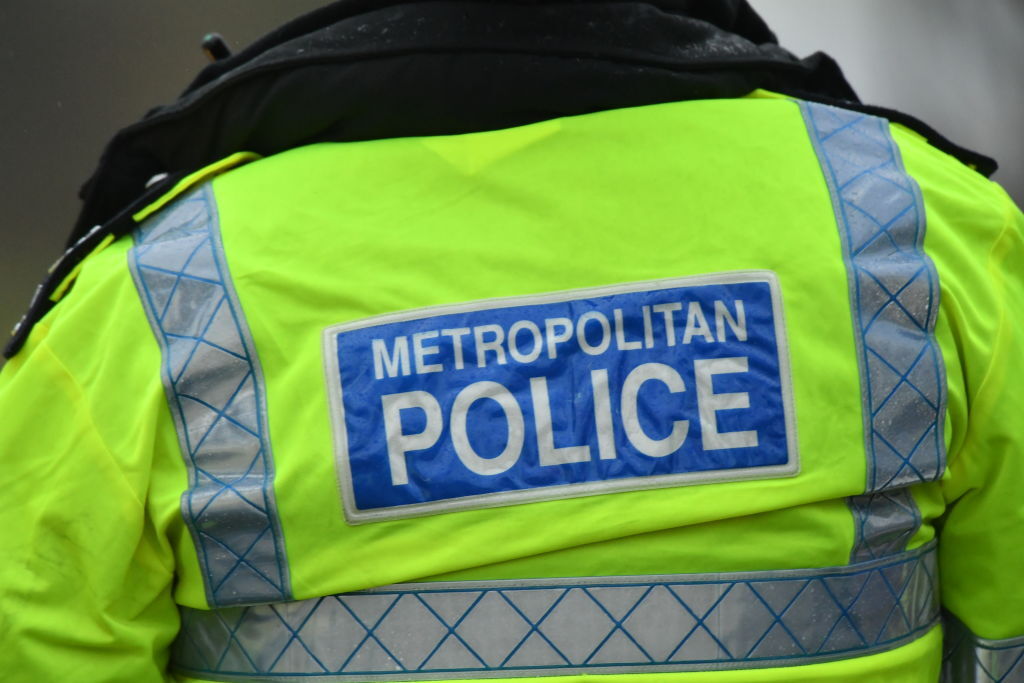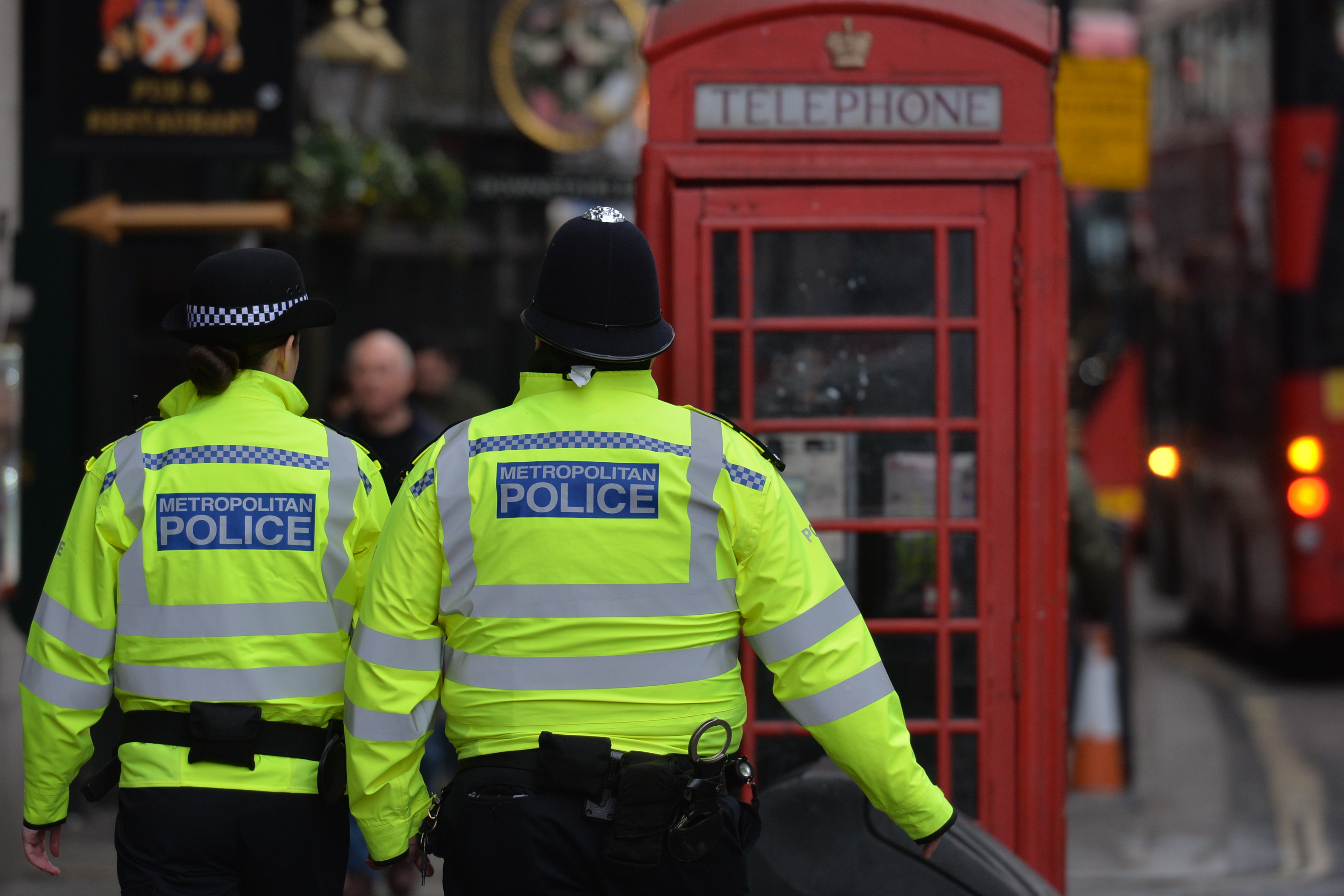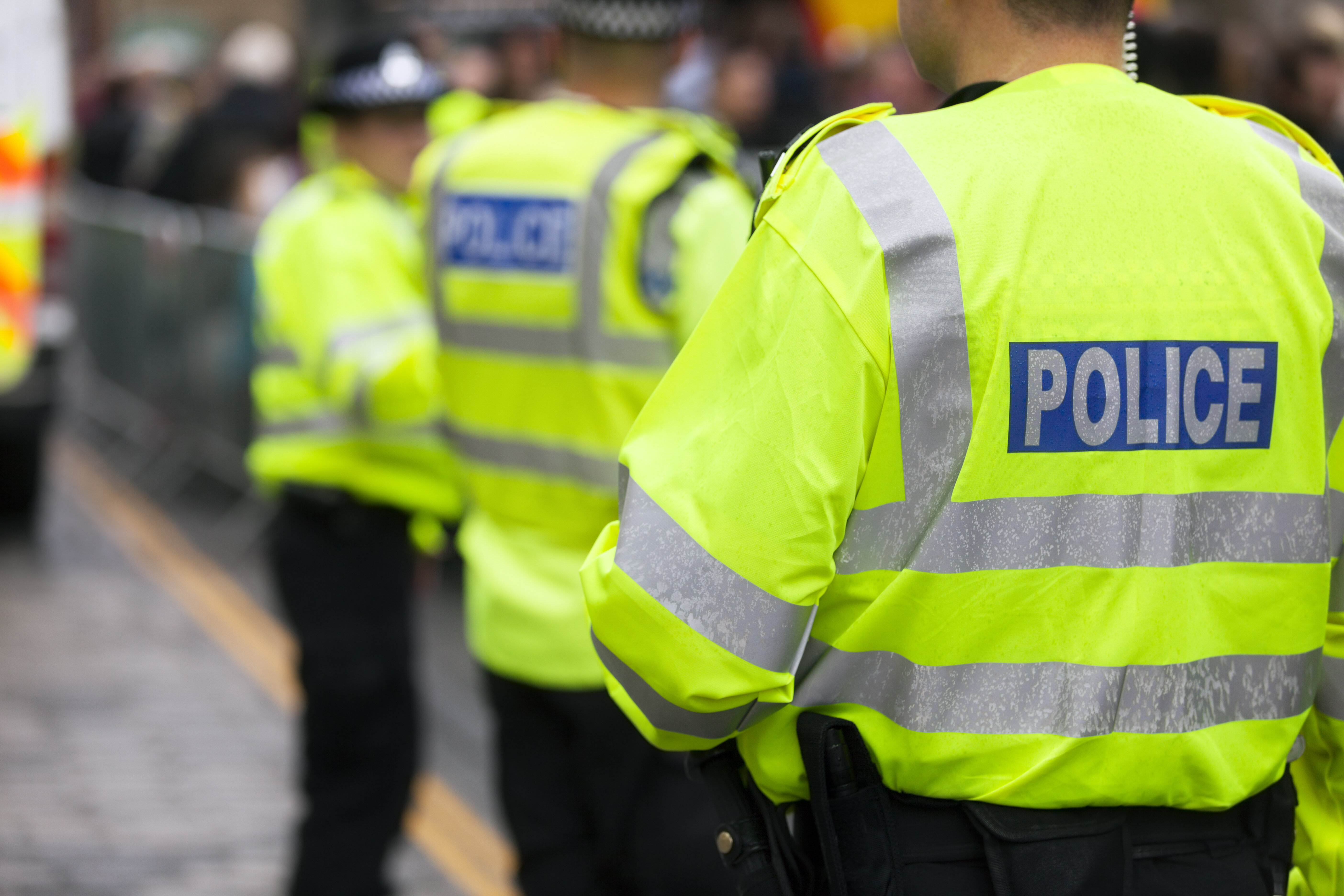
The PR wing of Britain’s biggest police force is publishing a disproportionate number of Black faces in news about violent crime, HuffPost UK can reveal.
London’s Metropolitan Police is more likely to issue details of a criminal sentencing if it involves a Black person, our analysis has shown.
And a Freedom of Information request found that despite decades of the overrepresentation of Black people in the criminal justice system, the Met still has no checks in place to prevent its own communications department from over-representing marginalised communities.
Campaigners have described the inordinate focus on Black faces as a “tactic of oppression”, calling for the force to reexamine how it releases information to the press and public in order to avoid perpetuating racist stereotypes.
According to data we obtained from the Ministry of Justice (MoJ), 13,897 people were sentenced in London between July and December of 2019 – the most recent MoJ data of this type available. Some 3,540 were white and 2,298 Black.
Ethnicity data was unavailable for almost 6,000 people, and for the purposes of this investigation, HuffPost UK has removed them from the total.
In the same period, the Met Police published news releases on its public website and directly to journalists about 324 people who had been sentenced. Of these, 107 were white, while 141 were Black.

These releases translate into headlines that make the front pages of newspapers not just in London but across the country, and are shared widely on social media – shaping the public’s perception of what a “criminal” looks like.
With news desks on both a local and national level having been subjected to brutal and relentless cuts for well over a decade, publications that would once have been able to spare a reporter to write stories directly from court are now increasingly reliant on these police handouts, meaning the force is directly able to influence what papers and websites publish.
‘Tactic of oppression’
Emmanuel Onapa, campaigns manager at youth-led police monitoring group Hackney Account, called the disproportionate focus on Black crime a “tactic of oppression”, a system that “perpetuates the narrative that Black people are criminals”.
But despite its power to shape public perceptions of criminality and race, the Met Police has no internal guidelines to prevent Black people from being disproportionately featured in press releases.
The words “race”, “ethnicity”, “minority” and “bias” do not appear anywhere in the force’s 37-page media policy, and nor is there any mention of negative stereotyping on an individual basis.
The document does state that, when it comes to appeals, “careful consideration should be given, when issuing appeals involving the images of large numbers of people, to ensure that the release does not unnecessarily associate any group (with protected characteristics) with criminality.”
But this same consideration does not appear to be extended to press releases about sentencing hearings, the point at which – unburdened by reporting restrictions associated with an ongoing court case – higher-profile crimes such as homicides tend to attract the widest media attention.
Violent crime
Black people who commit violent crimes are also more likely to be the focus of a press release than their white counterparts. In a society where young Black men are already profiled as violent, this matters.
Between July and December 2019, the Met Police issued news releases about 72 people who had been sentenced for violent offences such as murder, rape and violent robbery.
Of this group, 50 people were Black, equating to 69% of all the press releases in this category. The force published news about just 22 violent white offenders being sentenced.
But this bears no resemblance to the number of people who were actually sentenced during this period. From July to December, the Ministry of Justice’s own figures state, 575 white people in London were sentenced for violent crimes, while 344 Black people were sentenced for the same category of offences.
The picture is the same for other types of crime.
While white people were sentenced for theft offences at almost double the rate of their Black counterparts, the Metropolitan Police put out the same number of press releases on Black and white offenders – 29 each. While 134 white people and 62 Black people were sentenced in the capital for sexual offences throughout this period, the Met put out nine releases on Black people and 13 on white people.
This disproportionality is particularly pronounced when it comes to drug offences. This is even more problematic given that Black young people who have been groomed and trafficked for selling drugs are already more likely to be stopped by the police than white people, and less likely to be seen as victims of grooming when they enter the criminal justice system.
The same number of white and Black Londoners, 508 each, were sentenced in this category from July to December 2019 – already an overrepresentation of Black people. But the Met’s press team made this disparity nearly twice as bad again, putting out 33 press releases on Black people, and just 17 on white people.

In its response to our investigation, the Met Police conducted its own review of press releases over the same period, and was still forced to admit that its own communications team had put out more press releases on Black people than white people – though it claims 128 (44%) of the individuals identified were Black, while 112 (39%) were white. It is not clear where the Met obtained these numbers; HuffPost UK’s analysis was based on the press releases that our own journalists had been sent directly by the force.
A spokesperson added: “We noted that one release in July 2019 about the sentencing of a county-lines drug distribution network involved the sentencing of 15 Black people and one white person significantly impacting the figures.”
The Met said its media department, known as the press bureau, “keeps its processes and practice under constant review” to ensure “there is no opportunity for bias to impact on how we communicate with Londoners”.
But the spokesman said the force would now “consider whether there is a need for further monitoring of our releases for ethnic disproportionality”.
The most recent stop and search figures, published at the end of February, state that between April 2019 and March 2020 across England and Wales there were six stop and searches for every 1,000 white people, compared with 54 for every 1,000 Black people.
Young Black men continuously see themselves in not a positive light, especially when it comes to policing and the mediaEmmanuel Onapa, Hackney Account
Black people are twice more likely to be stopped and searched in London by the Met, where the rate is 71 stop and searches for every 1,000 Black people and 21 in 1,000 white people, than they are outside of the capital by another police force (the rate is 28 per 1,000 Black people in England and Wales outside the capital – London’s figure significantly skews the national average when it is included).
A report from Her Majesty’s Inspectorate of Constabulary and Fire and Rescue Services (HMICFRS), published at the end of February, found that “no force fully understands the impact” of the use of stop and search powers.
“Disproportionality persists and no force can satisfactorily explain why,” the report continued.
For Onapa, the disproportionate focus on Black people in the media, largely driven by the Metropolitan Police press office itself, is part of a self-perpetuating cycle.
He told HuffPost UK: “Young Black men continuously see themselves in not a positive light, especially when it comes to policing and the media.
“They then go on to fulfil that same self-fulfilling prophecy which has been shown to them through the police, and I feel like they [the police] are aware of it – maybe they’re not – but it’s something they need to tread carefully on.
″When you look back to colonial ties and the slave trade, and everything that happened with Stephen Lawrence and all these other cases, in a sense everything they’re doing is a reflection of their injustice.”
These press releases don’t just inform newspaper articles. Often they are the articles, published almost word-for-word in print and online – which are then shared on what could be millions of social media newsfeeds.
When people see constantly on their social media feeds or their news outlets that it’s a Black person who is a criminal, then that feeds into and gives credence to right-leaning media and says: ‘Yeah, all Black people are criminals.’Marverine Duffy
“First and foremost, news organisations are now relying on press releases from the police because gone are the days where you would readily be able to, as a journalist, phone a police press office and speak to an officer to get some more information, or even meet with an officer,” explained former Sky News anchor and BBC, ITV and 5 News reporter Marverine Duffy, now courses director and lecturer at the Birmingham School of Media.
“Journalists rely so much on this communication,” she said. “Take that, coupled with the fact that there are so many more demands on journalists in newsrooms, there are fewer journalists in newsrooms and it’s easier, faster and perhaps more efficient perhaps from a news production point of view to take a press release […] in its entirety and post it as a story.”
Duffy added: “It could mean that journalists are just posting these stories, thinking ‘yeah, great, another story from a police press office’ without thinking about the end result, which is the audience just seeing constant stories where people of African-Caribbean origin are portrayed as criminals.
“If that’s what keeps popping up on their newsfeed all the time, that’s what they’re going to think.
“When people see constantly on their social media feeds or their news outlets that it’s a Black person who is a criminal, then that feeds into and gives credence to right-leaning media and says: ‘Yeah, all Black people are criminals.’”
‘No formal guidelines’
In its response to HuffPost UK’s investigation, the Met Police said the force’s media and communications department had “a process in place for following up all homicide cases”, and would prepare to release details of the cases on conviction or sentencing.
Beyond homicides, the communications team would aim to release details on the “most significant cases”, as well as those where an appeal had been put out – though this isn’t a formal process and is subject to the specifics of each case.
The Met also states that details of cases are released when Directorate of Media and Communication (DMC) staff are “made aware” of media interest, or where staff know media have previously covered it.
But, as the force’s FOI response reveals, there are “no formal guidelines” specifying which cases should be publicised, and no threshold a case must pass to be deemed worthy of a proactive media release – nor is there a “record of any such previous guidelines”, much less a guide to ensuring there is no racial bias in them.
A spokesperson for the Met Police said sentencing hearings for murder trials are “always” publicised, “but every other case is considered individually and the ethnicity of those involved plays no part in the decision on whether we seek publicity”.
Media interest in a cases is also factored in, the spokesperson said, admitting these two factors mean the sentencings they publicise “are not wholly representative of all offenders brought to justice.
“However,” they add, “they also make it difficult to either demonstrate, or disprove, bias in decision making.”
The Met’s PR team follows the College of Policing’s Authorised Professional Practice on Media Relations document, which states: “Where appropriate and where there is a legitimate policing purpose, forces can proactively release information about court outcomes as a way of improving public confidence in the criminal justice system.”
They said that all staff in the DMC are required to undertake unconscious bias training, and alongside the College of Policing’s Authorised Professional Practice on Media Relations document, also refer to the College of Policing’s Code of Ethics to “make it clear that officers and staff should always act fairly and without bias”.
A spokesperson for the Metropolitan Police added: “The key factors that lead to the sentencing of a criminal being promoted by the Metropolitan Police Service are the severity and nature of the offence.
“This is because more serious offences will have had a greater impact on the public and it is important for community reassurance that they know danger has been reduced and an offender has been brought to justice.”
They added that the force’s “priority is tackling violence, and associated crimes such as robbery, weapons offences and drugs distribution are prioritised for publicity to demonstrate our commitment to tackling these offences and our success in bringing offenders to justice.
“The Met also seeks to promote cases where they demonstrate good police work, innovative investigative techniques or where they reinforce crime prevention messages.”
The force also undertook its own analysis of 124 pictures associated with news releases publicising sentencings on its website in the three months to March 7, 2021, a period HuffPost did not cover due to a lack of comparable MoJ data.
A spokesperson said: “This showed significantly different results. 75 (60%) of these images were of people who appear to be white and 35 (28%) are of people who appear to be Black.”
They added: “This indicates that the proportions are prone to change depending on the time frame included in the data.”
As no data is available about the actual sentencings that took place in this time, HuffPost UK is unable to verify whether these figures still represent a disproportionate focus on one group over another.
Infographics supplied by Statista.


